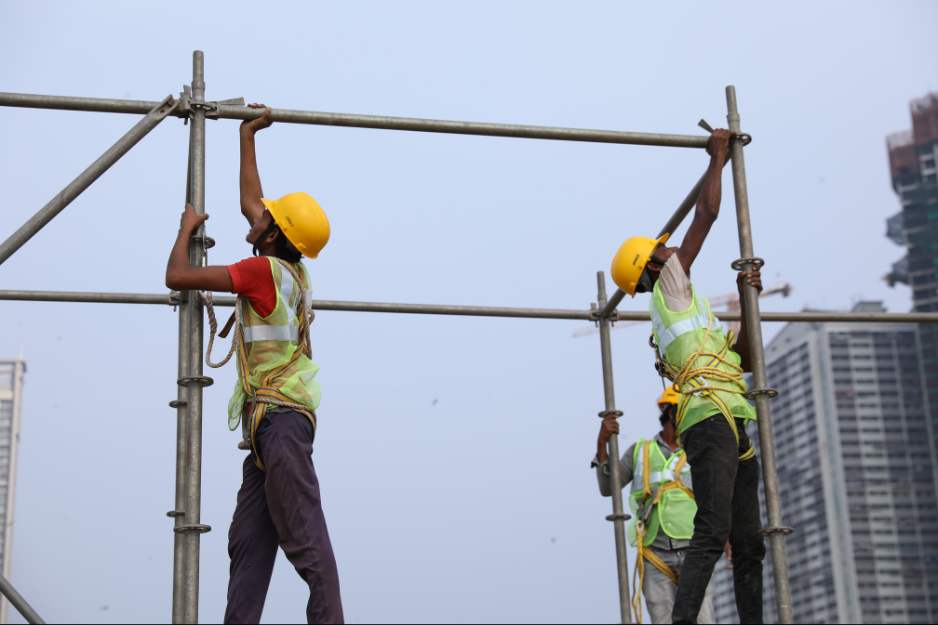If you’re looking to grow your subcontracting business, it can be tempting to set a 20% or 30% goal and immediately start bidding on the projects required to make it happen.
But in Clay Young’s 30 year experience as a subcontracting Chief Estimator, then Managing Partner, then Owner, anything less than a rigorous, long-term forecasting process puts your business at risk.
You should build your goals based on a series of key factors:
- Manpower
- Markets
- Target GCs
- Cash Flow
When you do, you can set your business up for success in 2024 and beyond, and grow without scrambling for cash and crews. Here’s how.
Table of Contents
Step 1: Backlog and Labor Evaluation
With his department VPs in the room for a planning session, the first step Young takes is to check the backlog and see what projects are in the pipeline. He then holds meetings with upper management to assess his current manpower capabilities. This helps him determine whether the current labor market can support the jobs he has coming, or if he needs to trim some fat. “Labor is a big piece of moving forward for the next year.” He says.
Pro Labor Tips:
- Use Finish-out Projects to Balance the Unpredictability of New Construction Timelines: Young likes to have a mix of long term projects and shorter finish out work that wraps after 3 or 4 months. Those varying schedules give him more flexibility with his crews, allowing him to slot them into other jobs while still keeping them busy. Idle workers are the ones you risk losing to competitors, so if a longer job gets delayed, you can easily move them into finish-out work. Young holds manpower meetings every 2 weeks to make these decisions.
- Form Labor Agreements with Other Subs: Young recommends that subcontractors connect with peers of a similar size in the market. Building informal agreements with other companies can be incredibly helpful, letting each other swap workers when one has too much work and the other doesn’t/can’t afford to keep them at that moment. This cooperative approach helps prevent situations where a company needs workers but can’t find them. Young says around 20% of projects might face delays, easily.
Step 2: Market Analysis
Young encourages subs to look 2-3 years out to identify emerging markets. You want to be ahead of the game, not behind it. Include smaller or up-and-coming ones, like cold storage, airport and rail markets, to help you build a diverse portfolio. These will supplement what Young calls your “bread and butter” projects – in other words, the standard jobs you know you do best and which yield strong and reliable profits.
The goal is to have work available in multiple industries, so that you aren’t caught flat-footed when work dries up in any given sector and are prepared to take on work in a growing industry as opportunities present themselves.
Diversify Between Public and Private Work:
Covid is a good example of when private sector jobs became very unpredictable and rife with delays. Leaning on public work helps combat the lean times in the private sector, but it’s a good strategy to implement preemptively.
Young recommends the people he consults to have at least 20% of their work be public or bonded money, which can help cover any unexpected expenses or at least their overhead in case of an unforeseen market downturn.
Step 3: Reach Out to GCs
Keep those “bread and butter” jobs at the forefront of your mind, then approach your 5 best GCs about their upcoming project load. Those GCs are probably forecasting out at the same distance as you. Use your annual planning period to find out what they’re looking at and which projects they think you would be a good fit for.
For Example: You know you need $20M in work to hit your goals for the year. Offer this number to the GC and see how much of their upcoming work aligns with your bread and butter. Let’s say one of those GCs has $7M in work that could be a good fit for you. The next GC isn’t pursuing too much work up your alley, and can only offer you $1M. If you do this with all of your top GCs and come up with at least $16M in work, Young believes you’re in a good spot. From there, you can start exploring those aforementioned emerging markets to fill the gap.
However, if you do this and come up very short, then you should look a bit beyond your bread and butter, considering jobs you’re decent at to supplement your workload. Don’t reach too far though. You don’t want to be wasting time trying to find the wrong type of work.
Win Rate Analysis During Forecast:
These numbers sound great at a speculative level. But, of course, you don’t win all the work you bid. Young has given presentations on how he achieves a 55.5% win rate, but even with those kinds of numbers, that means he’ll actually have to bid up to $40M in work, assuming he wins about half of it to hit his goals. You also have to account for the GCs win rate when they’re sharing their potential project load with you during your annual planning sessions.
To get the most accurate, up-to-date snapshot of his win rates, Young sits down with his team every November to evaluate their own win rates, examining November to November of the previous year. Estimators will share insights into how much they’ve been winning.
Pro Tip: Maintain an extremely strong, accurate database of information about your estimating stats so that when you pull this information, it’s usable. The last thing you want to do is build a forecast based on inaccurate data, and it requires discipline to maintain accurate data throughout the year.
Bonus Tip: Managing the Workload of your Estimating Team
As a former Chief Estimator who has won over $1B of work, Clay is constantly thinking about estimator workload. Young tracks how many hours an estimator is putting in on a bid. If an estimator is putting in 20 hours, Young needs to know how much value they’re getting out of that effort.
Some of these jobs you’ll bid 5 times, or you’re only doing budgetary numbers and not in contention to win the job. To avoid the exhaustive labor that comes with crafting a bid, sometimes that might mean giving the GC a high level number during the conceptual and budgetary rounds, letting them know you’ll get more granular on the bid if they choose to move forward. To protect your estimator’s time, you need to find out what the minimum amount of work they can put in in early rounds to advance to the next one, saving your detailed reviews for the final stages of the process.
Young leverages a custom cash flow spreadsheet (download available below), which features a curve for a single project. He uses it to examine the project’s cash flow as it lines up with pending and backlogged jobs. It will show month over month what he’ll be bringing in down to the penny. That said, predicting the payment timelines for pending jobs can be difficult, so he references the schedule of values to get an idea. He also emphasizes the importance of breaking out what he calls “general conditions,” like staffing and back of house people, over the entire job duration.
Young also stresses the significance of understanding cash flow curves, with some subs finding themselves upside down and not getting right side up until they get retainage. For this, he recommends a fixed cost approach for certain elements, which provides a more predictable revenue stream.
Billd is also an excellent option to help stabilize your cash flow, providing you with advances on your pay apps so you don’t have to wait out the brutally long payment cycles on most projects. Billd also supports subcontractors with material financing, giving them more time to pay sizable material invoices that can hurt their cash flow otherwise. Cash flow is the lifeblood of subcontracting businesses, and Billd sees to it that subs have ample resources to maintain the integrity of their cash flow.
The annual planning process for subcontractors demands a proactive and strategic approach. By incorporating Young’s insights and strategies, subcontractors can navigate uncertainties, optimize resources, and position themselves for success in the evolving construction landscape. As we usher in the new year, let these considerations guide you toward a year of growth and achievement (that won’t put your business at risk).






